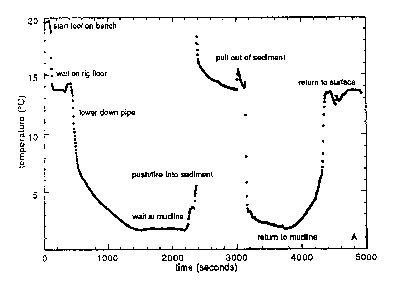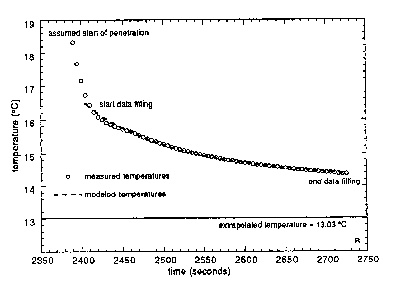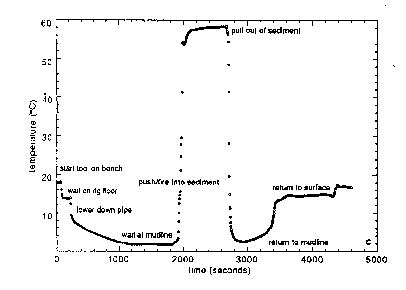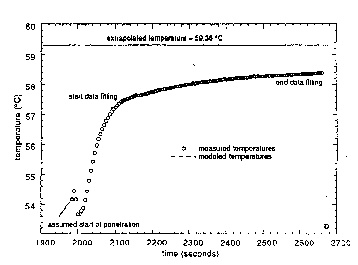
A

B

C

D

Figure III-3. Ideal records from in-situ sediment temperature stations with the WSTP and APC tool (these data are from APC deployment on Leg 139). The APC tool tends to give smoother, data curves, as this tool has a more stable data logger and penetrates more deeply into the sediments at the bottom of a hole. A. Example record from a complete station in relatively cool sediments. The frictional spike associated with tool insertion is generally greater for the APC tool, which is fired hydraulically into the sediments. B. Example comparing measured and modeled temperature decay from the same run as in (A). Note that the extrapolated final temperature is considerably lower than the lowest value measured while the probe was in the sediments. The shape of the decay curve varies as a function of the thermal properties of the sediments and tool, and the shape of the tool. C. A good temperature vs. time record for a measurement in warm sediments. The frictional heat pulse associated with insertion is barely apparent. D. Example comparing measured and modeled temperature decay from the same run as in (C).